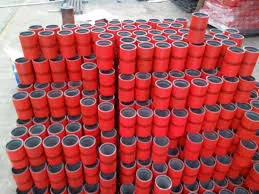- Afrikaans
- Albanian
- Amharic
- Arabic
- Armenian
- Azerbaijani
- Basque
- Belarusian
- Bengali
- Bosnian
- Bulgarian
- Catalan
- Cebuano
- Corsican
- Croatian
- Czech
- Danish
- Dutch
- English
- Esperanto
- Estonian
- Finnish
- French
- Frisian
- Galician
- Georgian
- German
- Greek
- Gujarati
- Haitian Creole
- hausa
- hawaiian
- Hebrew
- Hindi
- Miao
- Hungarian
- Icelandic
- igbo
- Indonesian
- irish
- Italian
- Japanese
- Javanese
- Kannada
- kazakh
- Khmer
- Rwandese
- Korean
- Kurdish
- Kyrgyz
- Lao
- Latin
- Latvian
- Lithuanian
- Luxembourgish
- Macedonian
- Malgashi
- Malay
- Malayalam
- Maltese
- Maori
- Marathi
- Mongolian
- Myanmar
- Nepali
- Norwegian
- Norwegian
- Occitan
- Pashto
- Persian
- Polish
- Portuguese
- Punjabi
- Romanian
- Russian
- Samoan
- Scottish Gaelic
- Serbian
- Sesotho
- Shona
- Sindhi
- Sinhala
- Slovak
- Slovenian
- Somali
- Spanish
- Sundanese
- Swahili
- Swedish
- Tagalog
- Tajik
- Tamil
- Tatar
- Telugu
- Thai
- Turkish
- Turkmen
- Ukrainian
- Urdu
- Uighur
- Uzbek
- Vietnamese
- Welsh
- Bantu
- Yiddish
- Yoruba
- Zulu
API 5CT Casing Coupling Specifications and Applications for Oil and Gas Industry
Understanding API 5CT Casing Couplings A Comprehensive Overview
The oil and gas industry relies heavily on drilling and completion operations, where the integrity and safety of the wellbore are paramount. One critical component in these operations is the casing, which serves to maintain the structural integrity of the well and prevent the influx of formation fluids. The API 5CT standard, developed by the American Petroleum Institute (API), outlines the specifications for casing and tubing used in the petroleum and natural gas industries. Among these specifications, casing couplings play an essential role in ensuring the connections between casing sections are secure and leak-free.
What is API 5CT?
API 5CT covers the specifications for casing and tubing used in the production of oil and gas wells. It provides guidelines for the materials, mechanical properties, and manufacturing processes for both carbon and alloy steel pipes used in well construction. The primary purpose of the API 5CT standard is to ensure a uniform and high-quality production of casing and tubing that can withstand various pressures and environmental conditions encountered during drilling.
The Role of Casing Couplings
Casing couplings are short pipes that connect two lengths of casing together. They are essential to the integrity of the casing string, serving as the connection point between individual casing sections. The quality and reliability of these couplings are vital for maintaining the overall strength and stability of the wellbore. Properly designed and manufactured couplings can withstand high-pressure environments, prevent corrosion, and minimize the risk of at-the-well failure.
Types of Casing Couplings
There are several types of casing couplings that conform to API 5CT standards, each designed for specific applications and conditions
. The most common types include1. External Couplings These are used to connect two pieces of casing, with the coupling being threaded on the outside. This design allows for easy assembly and disassembly.
api 5ct casing coupling

2. Internal Couplings Internal couplings offer a different approach by being threaded on the inside. This design helps to maintain a continuous internal diameter, reducing the risk of turbulence and pressure loss.
3. Long Couplings These couplings provide additional length, offering more extensive thread engagement. This design is particularly useful in high-stress applications where enhanced load-bearing capacity is required.
4. Double-Shouldered Couplings Known for their robust design, double-shouldered couplings have a thread both internally and externally, providing increased resistance to bending and torsional loads.
Material Considerations
The selection of materials for API 5CT casing couplings is crucial for their performance and durability. Typically, couplings are made from high-strength carbon steels or alloy steels, which can be treated to enhance their mechanical properties. The choice of material often depends on the specific conditions of the drilling environment, including factors like temperature, pressure, and the presence of corrosive materials.
Installation and Maintenance
Proper installation and maintenance of casing couplings are essential for the integrity of the entire casing string. Operators must ensure that the threads are clean and free from debris prior to assembly. Additionally, proper torque techniques should be followed to avoid over-tightening, which can lead to thread damage or failure.
Conclusion
The API 5CT casing coupling is a vital component in oil and gas drilling operations. Understanding its specifications, types, material considerations, and maintenance procedures helps ensure safe and effective well construction. As the oil and gas industry continues to evolve, adhering to these industry standards will remain important in maintaining the integrity and safety of drilling operations. Couplings may seem like a small component in the grand scheme of well construction, but their importance cannot be overstated. Choosing the right couplings and following proper installation techniques will go a long way in ensuring the success of drilling programs and the overall safety of operations.
-
Tubing Pup Joints: Essential Components for Oil and Gas OperationsNewsJul.10,2025
-
Pup Joints: Essential Components for Reliable Drilling OperationsNewsJul.10,2025
-
Pipe Couplings: Connecting Your World EfficientlyNewsJul.10,2025
-
Mastering Oilfield Operations with Quality Tubing and CasingNewsJul.10,2025
-
High-Quality Casing Couplings for Every NeedNewsJul.10,2025
-
Boost Your Drilling Efficiency with Premium Crossover Tools & Seating NipplesNewsJul.10,2025







